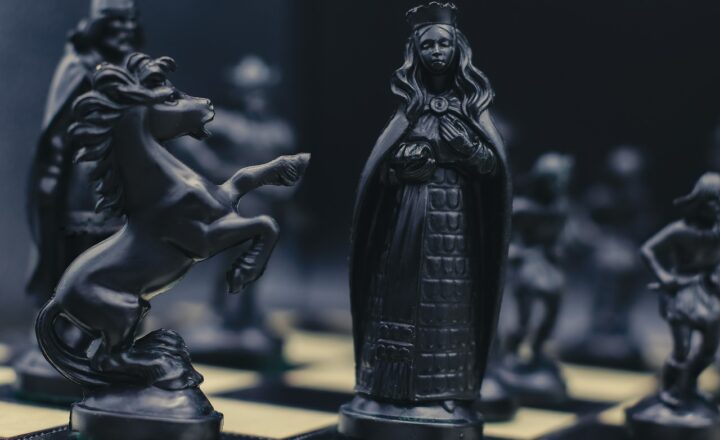
The Middle Ages were a period filled with superstition, religious fervor, and an unusual relationship between humans and animals. One of the most curious yet impactful stories of this era is the accidental declaration of war on cats by Pope Gregory IX in the early 13th century. This surprising action led to unintended consequences, including a massive rat invasion that affected the European landscape and human health. This article explores the events surrounding this curious episode in history, its origins, implications, and the legacy it left behind.
1. The Origins of Cat Persecution
Throughout history, cats have garnered a mixed reputation. In some cultures, they were revered and even worshipped, while in others, they were viewed with suspicion. By the 13th century, various superstitions about cats were prevalent, particularly in Europe. They were often associated with witchcraft and seen as familiars of witches, fueling a negative perception.
Pope Gregory IX, who became Pope in 1227, perceived cats, particularly black ones, as agents of the devil. Prompted by the belief that the cat was a companion to any witch, he declared that the cats should be eradicated to protect the faithful from the evil influences they supposedly conveyed. His mandate not only sanctioned the killing of cats but also encouraged witch hunts throughout Europe.
2. The Papal Bull Against Cats
In 1233, Pope Gregory IX issued a papal bull (a formal proclamation) which declared that cats were harmful to people. This bull did not merely suggest the killing of cats but actively encouraged it. Many people followed suit, and cat populations began to dwindle rapidly across Europe. This movement was not merely a religious zeal; it also had political backing from various nobility who were eager to align themselves with the Church’s agenda.
Cats were known for their skill in controlling rodents, particularly rats and mice, which were prevalent in medieval towns and cities. As the cat population declined, the number of rats increased significantly, creating an unintentional yet catastrophic ecological imbalance.
3. The Consequences: A Rat Invasion
With the mass extermination of cats, the rodent population exploded. Rats, in particular, became rampant across Europe, proliferating in homes, granaries, and marketplaces. This sudden increase in vermin brought about a series of problems:
- Food Supply Issues: Rats began consuming grain supplies, leading to food shortages and increased prices. This scarcity compounded the economic struggles of the day, resulting in hardship for the lower classes who depended on stable food supplies.
- Disease Outbreaks: The rodent population was host to fleas that carried dangerous diseases. Most famously, this would later culminate in the spread of the bubonic plague in the 14th century, which decimated European populations. The connection between the increase in rats and the rise of diseases such as the Black Death would not go unnoticed by contemporaries (though it would take centuries for the true connection to be understood).
- General Chaos: The presence of numerous rats led to widespread fear and panic among the populace. People began noticing buildings and homes becoming more infested with these pests, leading to public disorder and increasing calls for a solution to the rat problem.
4. The Shift in Perception
As the rat populations grew and the problems they caused became more acute, perceptions began to change about cats. An understood correlation between the eradication of cats and the invasion of rats led to a slow reversal of the anti-cat sentiments. As people began to realize that cats were effective hunters of rodents, the tide turned.
The feline species gradually regained favor within society, and people started to recognize their indispensable role in controlling vermin. The recovery of cat populations was not immediate, but it was certainly underway, and by the late Middle Ages, it was clear that cats were necessary for human cohabitation.
5. The Legacy of Pope Gregory IX’s Declaration
The incident serves as a cautionary tale about the complex relationship humans have with animals and the unforeseen consequences of our actions. It highlights how cultural and religious beliefs can lead us to make decisions that have dire repercussions on ecosystems.
While the papal bull against cats fell into oblivion, the relationship between humans and cats evolved from that point onward. Today, cats are seen as symbols of independence and are highly regarded as companions. The shift in how society views these animals is remarkable, and one can trace this back to that middle-age fear and misunderstanding.
Furthermore, the movement against cats has become a point of interest in studies of societal attitudes toward animals. Scholars and historians analyze the events surrounding Gregory IX’s decree to explore the intersections of theology, folklore, and the natural world. It helps us understand how societal fears can influence interactions with animals and shape their roles in our world.
Conclusion
In summary, the drastic actions taken by Pope Gregory IX led not only to the needless suffering and eradication of countless cats but also to an explosion in the rat population, resulting in dire consequences for society. As the story unfolds through the centuries, it reveals significant insights into the socio-cultural dynamics of the time and sheds light on our complex relationship with creatures that share our world. As we reflect on this unusual chapter in history, we can better appreciate the vital roles animals play in our ecosystems and the importance of understanding and respecting all living beings.
Understanding past mistakes allows us to cultivate healthier relationships with our environment and the creatures within it. Let us learn from the past and strive to create a harmonious balance between humanity and nature as we move forward into the future.







